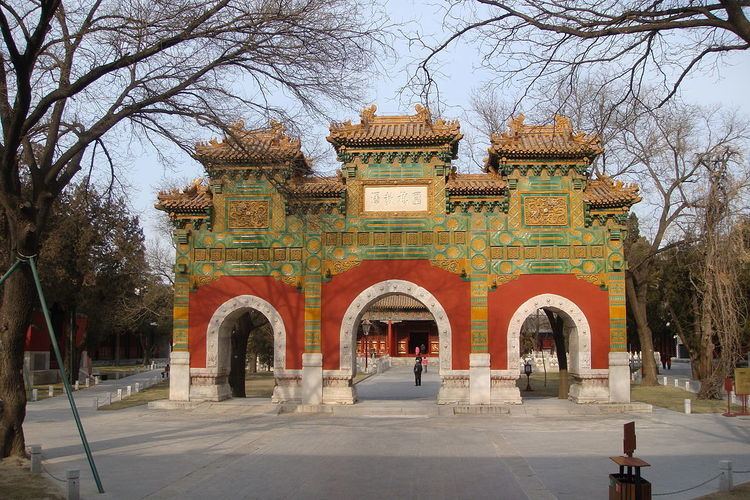 | ||
Address 13 Guozijian St, Dongcheng Qu, Beijing Shi, China, 100007 Hours Open today · 8:30AM–5PMSunday8:30AM–5PMMonday8:30AM–5PMTuesday8:30AM–5PMWednesday8:30AM–5PMThursday8:30AM–5PMFriday8:30AM–5PMSaturday8:30AM–5PM Similar Beijing Temple of Confucius, Yonghe Temple, Gulou and Zhonglou, Prince Gong Mansion, Shichahai | ||
Guozijian beijing top 5 facts
The Beijing Guozijian (simplified Chinese: 北京国子监; traditional Chinese: 北京國子監; pinyin: Běijīng Guózǐjiān), located on Guozijian (Chengxian) Street in Beijing, China, was the imperial college (Guozijian) during the Yuan, Ming and Qing dynasties, and the last Guozijian of China. Most of the Beijing Guozijian's buildings were built during the Ming Dynasty and it remains an important heritage site in China. During the Hundred Days' Reform of the Qing Dynasty, the education and administration of education functions of Guozijian was mainly replaced by the Imperial University of Peking (Jingshi Daxuetang), later known as Peking University. The Guozijian was shut down in 1905.
Contents
The Guozijian, often translated into English as the Imperial Academy or Imperial College, was the national central institute of learning in ancient Chinese dynasties. It was the highest institute of learning in China's traditional educational system. Emperors in imperial China would also frequently visit the Guozijian to read Confucian classics to thousands of students.
History
The Guozijian was first built in 1306 during the 24th year of Zhiyuan Reign of the Yuan Dynasty, and was reconstructed and renovated on a large scale during Yongle and Zhengtong reigns of the Ming Dynasty.
The administrative officials of Guozijian were called Chief (祭酒, Jìjiǔ), Dean of Studies (司業, Sīyè), or Proctor (監丞, Jiānchéng). The students who studied at the Guozijian were called "Jiansheng" (監生, Jiànshēng), and they mainly studied the Confucian classics.
Location and layout
The Guozijian is situated at the central area of the Guozijian Street and adjoining several other well known imperial structures of Beijing, and the complex of Guozijian accords with the Chinese tradition which dictates that the temple should be on the "left" and the school or college on the "right". To the east of the Guozijian, lies the Confucius Temple, the second largest Confucius temple in all of China, and the Yonghegong Temple, the largest Lama Temple in Beijing.
The whole complex of Guozijian faces south, and it has a total building area of more than 10,000 square meters or 107,639 square feet. Along the central axis of Guozijian are the Jixian Gate (the front gate), Taixue Gate (the second gate), the Glazed Archway, Biyong, Yiluntang, and Jingyiting (Jingyi Pavilion). On its east and west sides are the six halls and palaces in the traditional symmetrical layout.
